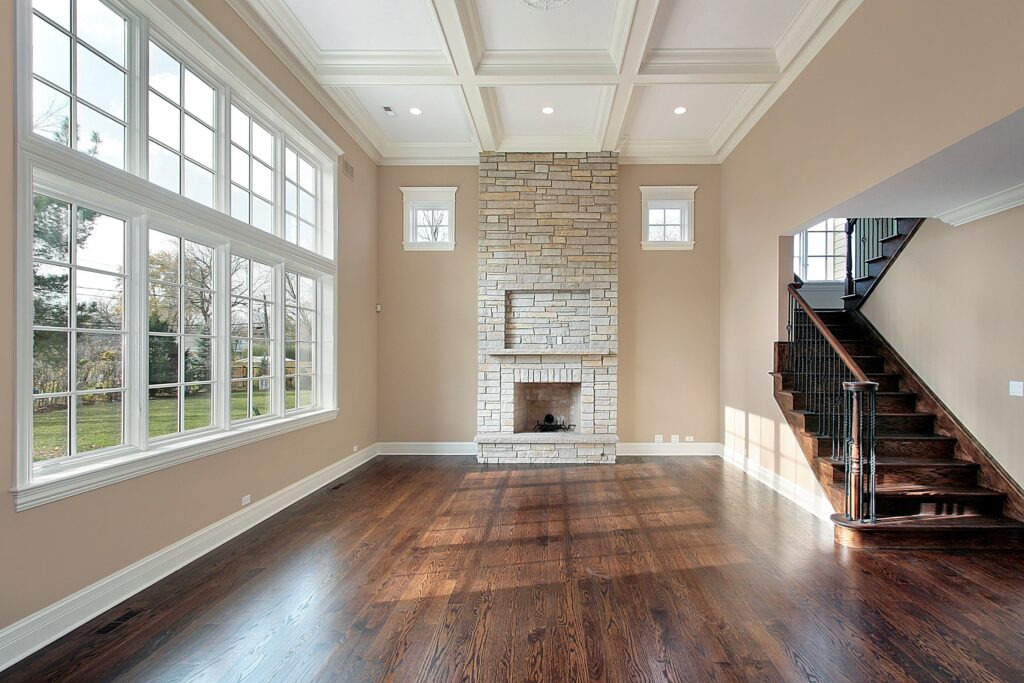Discover the art of hardwood floor refinishing and how it can revive the beauty and elegance of your home. From sanding away imperfections to applying custom stains and protective finishes, this transformative process brings new life to worn-out floors. With enhanced durability, improved indoor air quality, and increased home value, hardwood floor refinishing is a cost-effective investment.
Hardwood floors are timeless and elegant, adding warmth and character to any space. However, over time, these floors can lose their luster and suffer wear and tear from daily use. That’s where hardwood floor refinishing comes in. It’s a transformative process that rejuvenates tired floors, bringing back their natural beauty and enhancing the overall aesthetic appeal of your home. In this blog post, we’ll explore the art of hardwood floor refinishing, its benefits, and why it’s a worthwhile investment for homeowners.
The Refinishing Process
Hardwood floor refinishing involves several key steps to restore the floor’s original charm. The process typically begins with sanding, which removes the existing finish and evens out imperfections such as scratches, dents, and stains. Professional sanding equipment ensures a smooth and consistent surface, preparing the floor for the next phase.
After sanding, the floor is carefully inspected for any gaps, loose boards, or structural issues. These issues are addressed and repaired to ensure a solid foundation. Next, the floor is meticulously cleaned and vacuumed to remove any dust or debris from the sanding process.
The next step is staining, where you have the opportunity to change the color of your hardwood floor to match your desired aesthetic. Whether you prefer a darker, richer tone or a lighter, more contemporary look, staining allows you to customize the appearance of your floor to suit your style and preferences.
Once the stain is applied, a protective finish is added. This finish serves as a barrier against everyday wear and tear, providing durability and longevity to your newly refinished hardwood floor. There are various finish options available, including water-based, oil-based, and polyurethane finishes, each with its own unique characteristics and benefits. Your flooring professional can guide you in selecting the best finish for your specific needs.
Benefits of Hardwood Floor Refinishing
Hardwood floor refinishing offers numerous benefits that make it a worthwhile investment for homeowners:
- Restored Beauty: Refinishing breathes new life into worn-out hardwood floors, bringing back their natural beauty and shine. It removes surface imperfections, revealing the rich grain and color variations of the wood.
- Enhanced Durability: The protective finish applied during the refinishing process adds a layer of durability, making your hardwood floors more resistant to scratches, stains, and general wear and tear. This helps extend the lifespan of your floors, saving you money in the long run.
- Improved Indoor Air Quality: Refinishing removes old finishes and seals gaps in the wood, reducing the accumulation of dust, allergens, and other contaminants. This leads to better indoor air quality, particularly beneficial for those with allergies or respiratory issues.
- Cost-Effective: Hardwood floor refinishing is a cost-effective alternative to replacing the entire floor. It allows you to preserve and restore your existing flooring, saving you the expense of purchasing and installing new hardwood.
- Increased Home Value: Refinished hardwood floors add significant value to your home. They create a positive impression on potential buyers, making your property more appealing and potentially commanding a higher selling price.
Maintenance Tips for Refinished Hardwood Floors
To maintain the beauty and longevity of your refinished hardwood floors, it’s important to follow proper maintenance practices. Here are some tips to keep in mind:
- Regular Cleaning: Sweep or vacuum your floors regularly to remove dust, dirt, and debris. Use a microfiber mop or a damp cloth for deeper cleaning, ensuring you don’t saturate the floor with excess moisture.
- Avoid Harsh Chemicals: When cleaning your refinished hardwood floors, avoid using harsh chemicals or abrasive cleaners that can damage the finish. Instead, opt for pH-neutral cleaners specifically formulated for hardwood floors.
- Use Protective Measures: Place doormats at entryways to trap dirt and prevent it from being tracked onto your floors. Use felt pads or furniture coasters under heavy furniture to prevent scratches and indentations.
- Avoid Excessive Moisture: Hardwood floors are susceptible to moisture damage. Wipe up spills immediately and avoid using wet mops or excessive water when cleaning.
- Schedule Regular Maintenance: Periodically have your refinished hardwood floors professionally inspected and maintained. This may include reapplying a protective topcoat or addressing any minor issues that may arise.
Hardwood floor refinishing is a transformative process that restores the natural beauty of your floors and enhances the overall aesthetic of your home. It offers numerous benefits, including increased durability, improved indoor air quality, and added value to your property. By following proper maintenance practices, you can ensure that your refinished hardwood floors remain beautiful and resilient for years to come. Trust the expertise of professional flooring contractors to execute this artful process and breathe new life into your hardwood floors.

